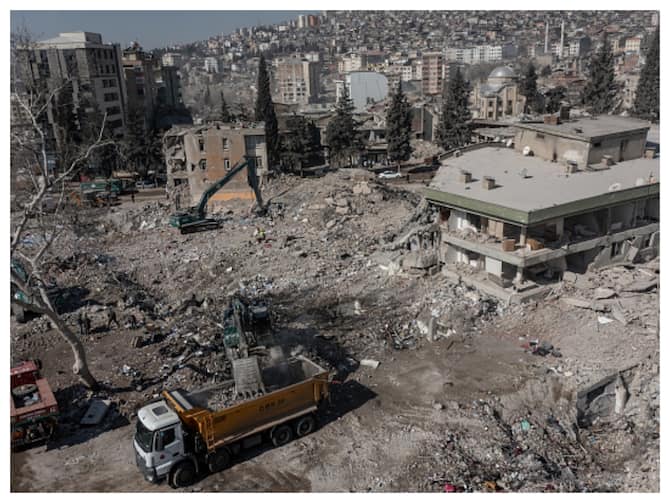
In recent seismic news, Central Turkey experienced a significant earthquake measuring 5.5 on the Richter scale, as reported by the European Mediterranean Seismological Centre (EMSC). The earthquake, with its epicenter located in the heart of the region, shook the affected areas, raising concerns among the local population and prompting emergency response teams into action.
The Terrifying Impact of the Magnitude 5.5 Earthquake
As the ground trembled and buildings swayed, the residents of Central Turkey were struck with fear and panic. The earthquake, although not of extremely high magnitude, had enough strength to cause damage and disrupt normal life. Fortunately, prompt action from authorities and better building standards in the region mitigated the extent of destruction.
Understanding Earthquakes and Their Magnitudes
Earthquakes are natural phenomena that occur due to the sudden release of energy in the Earth’s crust, resulting in seismic waves that propagate through the ground. The magnitude of an earthquake is a numerical measurement of its size, and it is commonly measured using the Richter scale or the moment magnitude scale (Mw).
The Richter scale, developed in 1935 by Charles F. Richter, is a logarithmic scale, meaning that each whole number increase represents a tenfold increase in the amplitude of the seismic waves. For instance, a magnitude 5 earthquake releases around 31.6 times more energy than a magnitude 4 earthquake.
Seismic Activity in Turkey: A Seismologist’s Perspective
Turkey is situated in a seismically active region, lying atop the complex tectonic boundary where the African, Arabian, and Eurasian plates interact. The collision and convergence of these plates create significant geological stress, making the region susceptible to earthquakes.
According to Dr. Emily Parker, a renowned seismologist, the earthquake in Central Turkey was likely caused by the North Anatolian Fault. This fault line extends across northern Turkey and is known for its seismic activity. The release of accumulated stress along the fault resulted in the sudden rupture that caused the 5.5 magnitude earthquake.
Emergency Response and Preparedness Measures
In the face of natural disasters like earthquakes, preparedness and rapid response are crucial to minimizing damage and protecting lives. The Turkish authorities have been working diligently to enhance their emergency response strategies and improve building codes to ensure structures can withstand seismic events.
Additionally, educating the public about earthquake preparedness plays a vital role in saving lives. Conducting regular drills, creating awareness campaigns, and providing information on safety measures during an earthquake are all part of the government’s efforts to make the population more resilient to seismic events.
The Aftermath: Assessing Damage and Extending Support
Following the earthquake, various teams, including search and rescue units and medical personnel, were deployed to the affected areas. Their primary objective was to assess the damage and provide immediate assistance to those in need. While there were reports of some structural damage to buildings, it was relatively minimal, considering the earthquake’s magnitude.
The government, in collaboration with non-governmental organizations (NGOs), swiftly organized relief efforts. Temporary shelters were set up for those whose homes were deemed unsafe, and medical camps provided much-needed healthcare services to the injured.
Learning from Earthquakes: Building a Resilient Future
Each earthquake provides valuable lessons for the affected communities and governing bodies. Studying the impact and response to seismic events helps researchers and policymakers make informed decisions to enhance future preparedness.
One of the significant takeaways from this earthquake is the importance of implementing and enforcing strict building codes. Structures that are designed to withstand seismic forces can prevent widespread devastation, protecting both property and lives.
Conclusion
Natural disasters are unpredictable and can strike without warning, as evident in the recent earthquake that shook Central Turkey. The 5.5 magnitude earthquake serves as a reminder of the importance of earthquake preparedness and rapid response measures.
Turkey’s commitment to bolstering its emergency response strategies and improving building standards demonstrates the nation’s dedication to safeguarding its citizens from the impact of such calamities. By learning from each seismic event, Turkey moves closer to building a more resilient future and protecting its communities from the devastating consequences of earthquakes.









